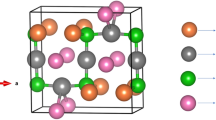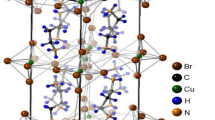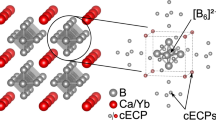Abstract
RAO1 has recently observed the absorption spectra obtained when halides of mercury were placed in a heated steel tube. New systems attributed to HgCl and HgBr were found and analysed, leading to values for the dissociation energies of these molecules. Comparison of the wave-lengths of these 'new' bands with tables2 of collected band heads of known molecules reveals coincidences with CuCl and CuBr. More detailed comparison shows that Rao's Q1 heads of 'HgCl' coincide with the D system of CuCl, and the Q2 heads with the E system. For 'HgBr' all the assigned band heads can be identified with the B system of CuBr; other unassigned bands of 'HgBr' coincide with bands of the A system of CuBr. The identity is quite convincing.
This is a preview of subscription content, access via your institution
Access options
Subscribe to this journal
Receive 51 print issues and online access
$199.00 per year
only $3.90 per issue
Buy this article
- Purchase on SpringerLink
- Instant access to full article PDF
Prices may be subject to local taxes which are calculated during checkout
Similar content being viewed by others
References
Rao, A. L. S., Indian J. Phys., 16, 393 (1942).
Pearse, R. W. B., and Gaydon, A. G., "The Identification of Molecular Spectra" (Chapman and Hall., London, 1941).
Gaydon, A. G., Proc. Roy. Soc., A, 182, 199 (1913).
Author information
Authors and Affiliations
Rights and permissions
About this article
Cite this article
GAYDON, A. Absorption Spectra of Mercury Halides. Nature 155, 452 (1945). https://doi.org/10.1038/155452b0
Issue date:
DOI: https://doi.org/10.1038/155452b0
This article is cited by
-
Thermal Decomposition of HgCl2 Vapour
Nature (1945)



